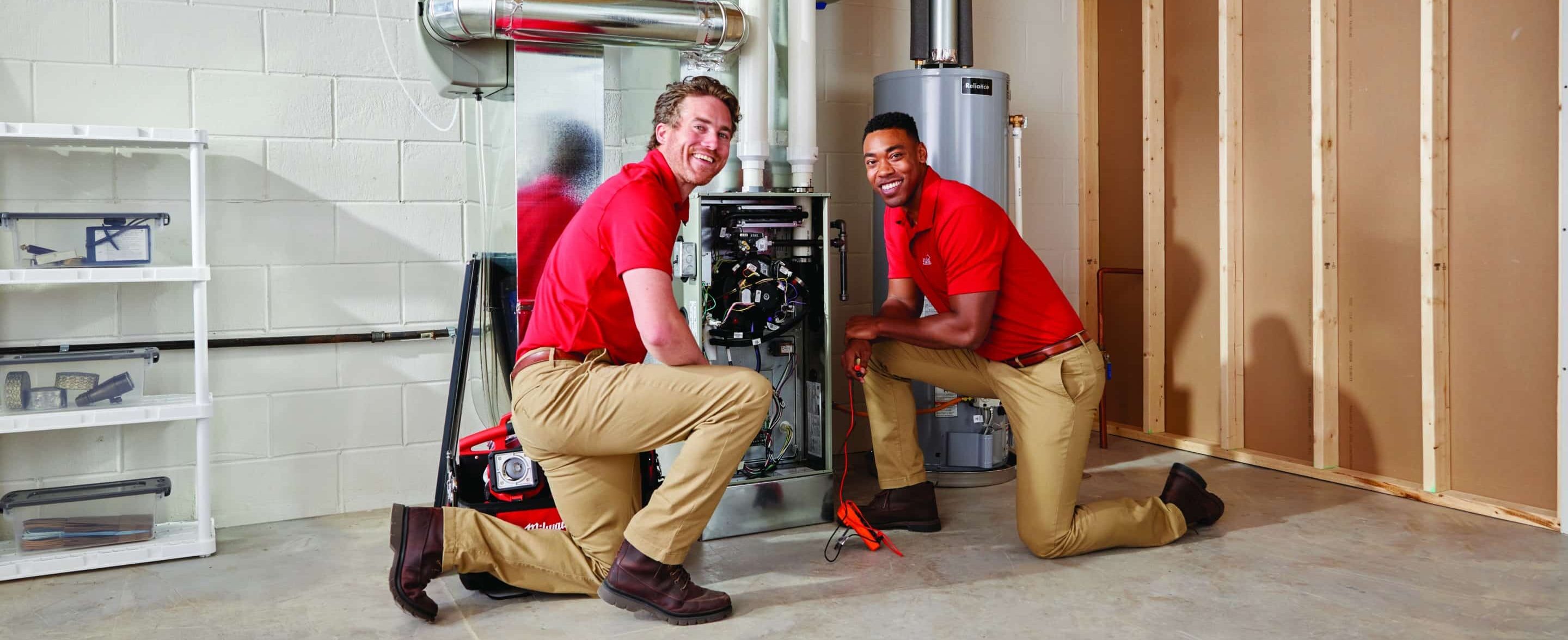Dealing with heater issues working can be frustrating, especially in the colder months. However, just because your heat isn’t working doesn’t mean you have to call a professional right away. Some of the most common heater issues can be resolved on your own. If it’s winter and your heat fails, we’ve got a 10-step checklist to help you troubleshoot before you give our pros a call.
- Check Your Thermostat Settings
Start with the basics: make sure your thermostat is set to “Heat” and not “Cool” or “Off.” This is especially important if you have children in the home. Verify that the temperature setting is high enough to trigger the system. If your thermostat has batteries, consider replacing them since low power can also cause malfunctions.
- Inspect the Circuit Breaker
A tripped breaker is a common reason, and easy to fix issue. If your heat’s not turning on, check if the switch for your heater has flipped to “Off.” Reset it if necessary, and monitor whether it trips again.
- Check Your Air Filter
Dirty air filters can block airflow and cause your system to overheat or shut down. Examine your filter and replace it if it’s clogged or hasn’t been changed in the past three months. Regular heating system maintenance includes replacing air filters to ensure optimal performance.
- Open and Unblock Vents
Blocked or closed vents restrict airflow, making rooms feel colder and overworking your system. If a specific room or area feels cold, make sure all vents are open and free from obstructions like furniture, curtains, or rugs.
- Inspect the Pilot Light or Ignition System
For older systems with pilot lights, check to see if the flame is still lit. If it’s out, follow the manufacturer’s instructions to relight it. If your system uses an electronic ignition, listen for clicking sounds when it starts. If the ignition isn’t working, you may need professional heating system maintenance.
- Look for Leaks or Blockages in the Ducts
Damaged or blocked ducts can lead to uneven heating or no heat at all. Check accessible ductwork for any visible damage, leaks, or debris buildup. Seal any gaps with duct tape for a short-term fix, but have a professional inspect the entire system at some point.
- Monitor for Unusual Noises
Strange noises like banging, rattling, or squealing coming from your furnace or heat pump can be a sign of loose components or mechanical issues. You can check for anything obvious, and if it’s reachable, tighten it up. Unusual sounds are often an early warning sign that your system needs attention.
- Seal Drafts Around Windows and Doors
Drafts from windows and doors can make your heating system work harder than it needs to. Use weather stripping or caulk to seal gaps and keep warm air inside. This also lowers energy bills.
- Make Sure the Furnace is On
Many furnaces have a switch that looks like a light switch near the unit. Make sure it’s in the “On” position. It’s easy to accidentally flip this switch while working around your heating system.
- Verify the Gas Supply
If you have a gas-powered system, check that the valve is open and your heating system is receiving gas. If the supply is interrupted or the valve is closed, your heater won’t work. Contact your gas provider if you suspect an issue with the supply.
Heat Not Working? Call Carolina Custom Air!
If you’ve gone through this checklist and your heat is not working, it’s time to call the professionals. Regular maintenance can prevent many issues, but when problems do crop up, Carolina Custom Air is here to help.
Our team specializes in fast, reliable heater repair to get your system running smoothly again. Don’t get left out in the cold—contact Carolina Custom Air today!


